Manual:The FreeCAD Interface
- Introduction
- Discovering FreeCAD
- Working with FreeCAD
- Python scripting
- The community
FreeCAD is based on the Qt framework and is characterized by a simple and straightforward interface. More experienced CAD users will be able to identify similarities with other software, while new users will find it easy to navigate and discover the various options FreeCAD offers. Here is the default look of FreeCAD:

The Start Page serves as the welcoming screen, designed to facilitate quick and easy access to the main areas of FreeCAD that a user might wish to explore. Through it, users can effortlessly create new parts, open recent files, and initiate 2D drafting. Additionally, it features shortcuts to helpful resources like tutorials and user forums, which are invaluable for both beginners and experienced users seeking guidance or tips. Users can easily customize the appearance of the Start Page according to their preferences.
As you become more proficient with FreeCAD, you might adjust the settings under preferences. This can configure FreeCAD to open directly into one of the Workbenches with a new document ready to go when you launch it. Alternatively, you can simply close the Start Page tab and manually create a new document.
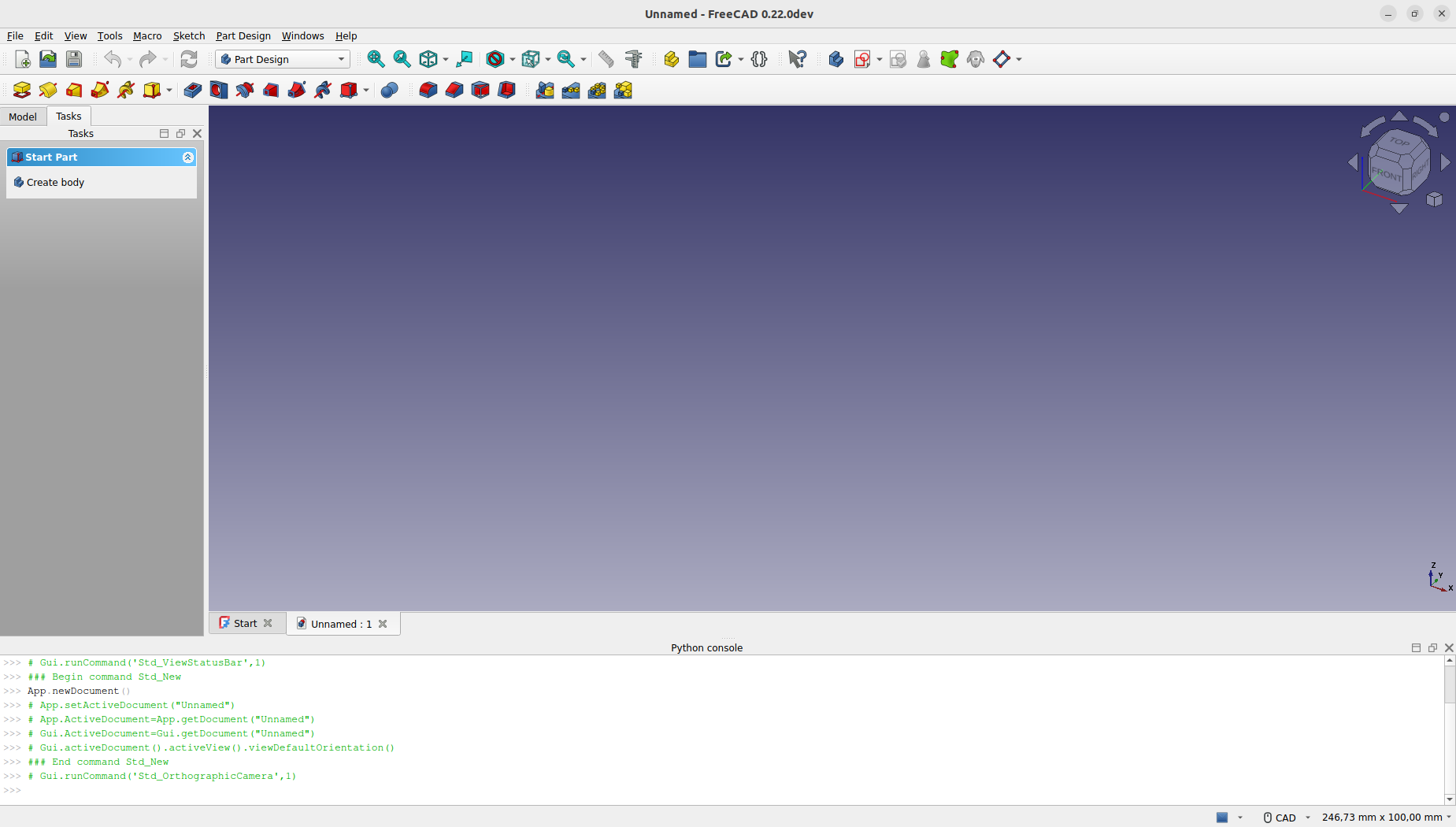
Workbenches
FreeCAD employs a system called "Workbenches," similar to the conceptual frameworks used in advanced design software like Revit or CATIA. The idea of a Workbench is analogous to specialized stations in a scientific lab, where different workstations are equipped for distinct types of experiments. In a lab, you might have one area dedicated to chemistry, another to biology, and a third for physics, each outfitted with the specific tools needed for those disciplines.
In the context of FreeCAD, each Workbench is tailored to a particular type of task, organizing all the necessary tools for that activity in one interface. When switching between Workbenches, the set of tools and controls visible in the user interface adjusts to reflect the needs of the selected task, though the actual project contents or "scene" you are working on does not change. This allows for seamless transitions in workflow, such as beginning a design with basic 2D shapes in the Draft Workbench and then elaborating on these designs with advanced modeling tools in the Part Workbench.
The terms "Workbench" and "Module" are sometimes used interchangeably, but they have distinct meanings within FreeCAD. A Module is any extension that adds functionality to FreeCAD, while a Workbench is a specific kind of Module equipped with its own user interface components such as toolbars and menus, designed to facilitate specific types of tasks. Thus, every Workbench is a Module, but not every Module qualifies as a Workbench.
The most important control of the FreeCAD interface is the Workbench selector, which you use to switch from one Workbench to the other:
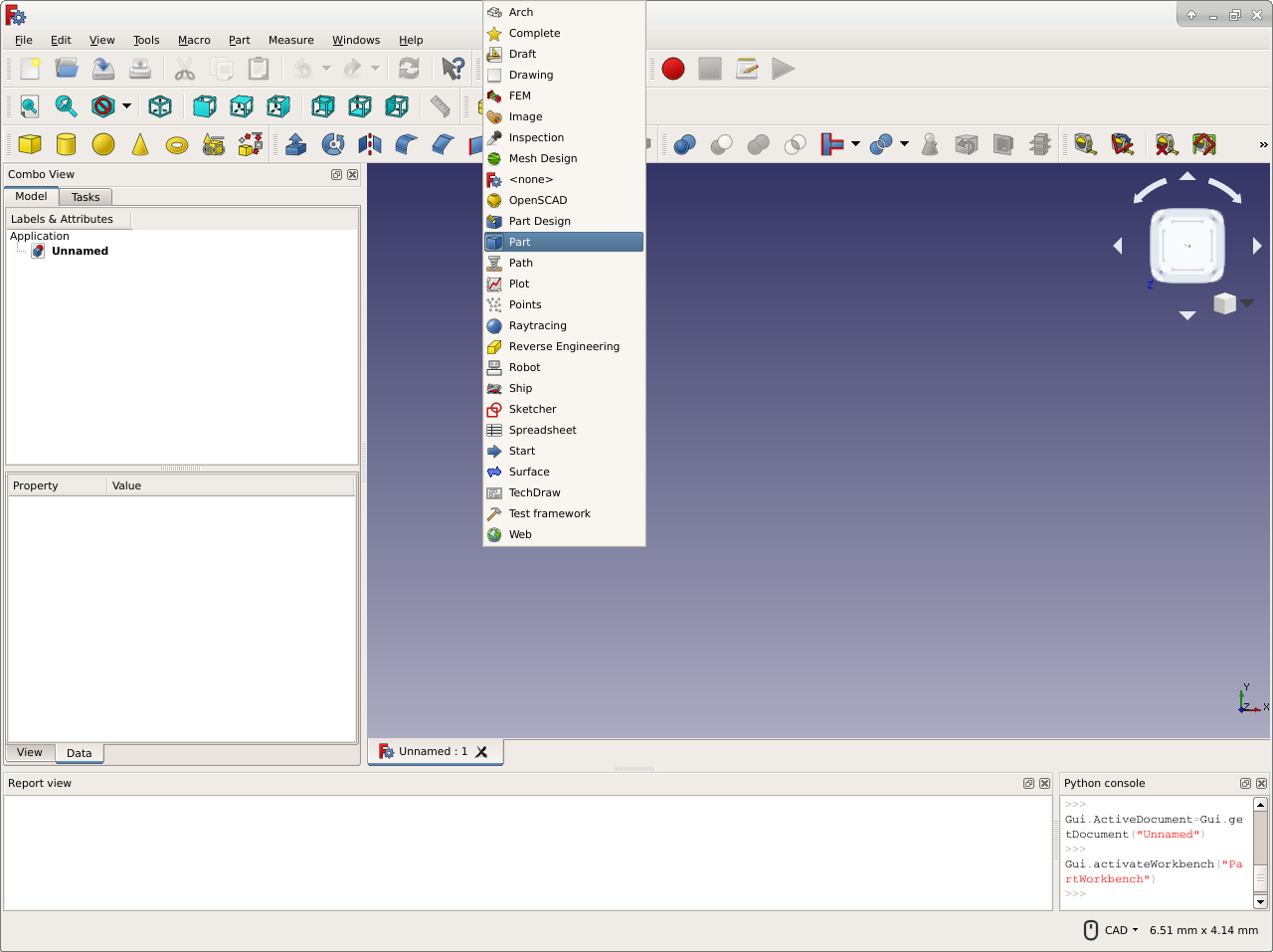
The interface
Let's have a better look at the different parts of the interface:
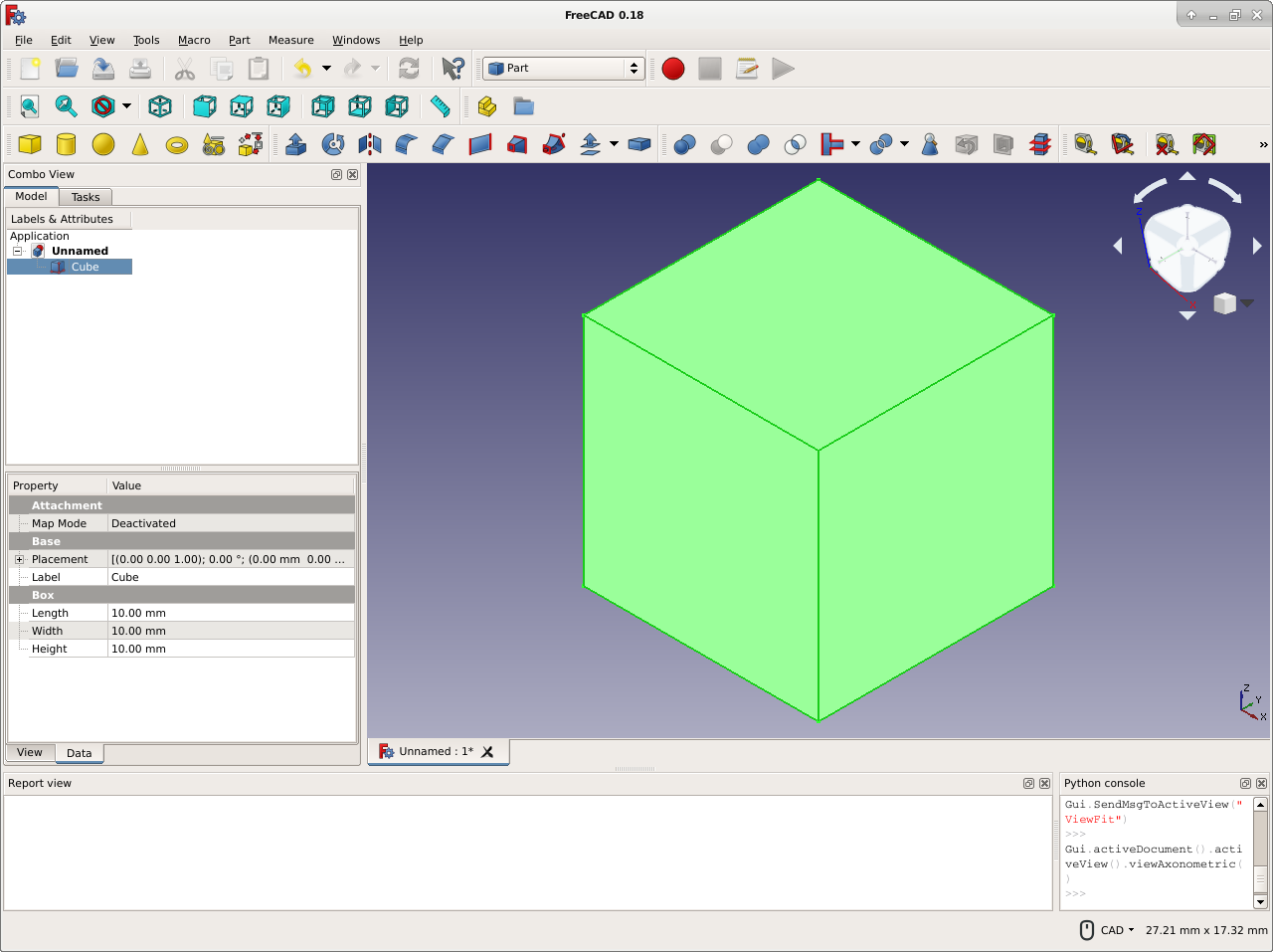
- The 3D view is the main component of the interface; it is where the objects you are working with are drawn and manipulated. You may have several views of the same document (or same objects), or several documents open at the same time. Each of these views may be individually undocked from the main window. You may select objects or parts of objects by clicking them, and you can pan, zoom and rotate the view with the mouse buttons. This will be explained further in the next chapter.
In addition to the 3D view panel, the following information panels are available. They may be made visible or hidden by selecting them from View → Panels . The name of the panel appears in the upper left corner of the panel when it is displayed:
- The combo view has two tabs:
- The Model tab shows you the contents and structure of your document above and the properties (or parameters) of the selected object(s) below. These properties are separated into two categories:
- Data (properties which concern the geometry itself)
- View (properties that affect how the geometry looks on screen).
- The Tasks tab is where FreeCAD will prompt you for values specific to the workbench and tool you are currently using. For example, entering a 'length' value when the Draft Workbench Line Tool is being used. It will clear and switch back to the Model tab after the OK (or Cancel) button is pressed. Double-clicking the related object in the Model tab will usually reopen the corresponding Task tab in order to modify the settings.
The Tasks tab sometimes has puzzling and frustrating side-effects. If the Task tab is not empty, some FreeCAD operations will not work as expected. For example, if you have a single object in your model such as a cube, double-clicking on it will open the Tasks tab to allow you to modify the parameters characterizing the cube. If you have the Selection view open, you will see the cube's internal name listed there. The entire cube will turn green in the 3D panel, indicating the entire cube is selected. Clicking on the background will deselect the entire cube and clear the Selection view. So far, this is normal behavior. However, if you now click on a face of the cube, instead of that face being selected, nothing will be selected — because the Tasks tab has not been completed. Even if you have made no modifications to the parameters there, FreeCAD is waiting for the OK (or other) button in the Tasks tab to be clicked.
- The Model tab shows you the contents and structure of your document above and the properties (or parameters) of the selected object(s) below. These properties are separated into two categories:
- The report view is normally hidden, but it is a good idea to open it as it will list any information, warnings or errors to help you decipher (or debug) what you may have done wrong.
- The Python console is also hidden by default. This is where you can interact with the contents of the document using the Python language. Since every action you do on the FreeCAD interface actually executes a piece of Python code, having this open allows you to watch the code unfold in real time — allowing you a wonderful and easy way to learn a little Python on the way, almost without noticing it.
- The tree view displays only the object tree shown under the Model tab in the combo view. It is normally hidden.
- The property view displays only the object property information shown at the bottom of the combo view. It is normally hidden.
- The selection view shows the names of any objects which are currently selected. These are the objects to which a workbench operation will be applied. It can be used to refine the selection by deselecting some of those objects before a workbench operation is applied. The selection view can also be used to search for objects by name and then select them. By default, the selection view is hidden. While you can often determine the currently selected object(s) by looking at the object tree in the Model tab of the combo view, for complex operations requiring multiple selections and where selection is difficult it is helpful to make this view visible so you can both see the labels and count the selected objects.
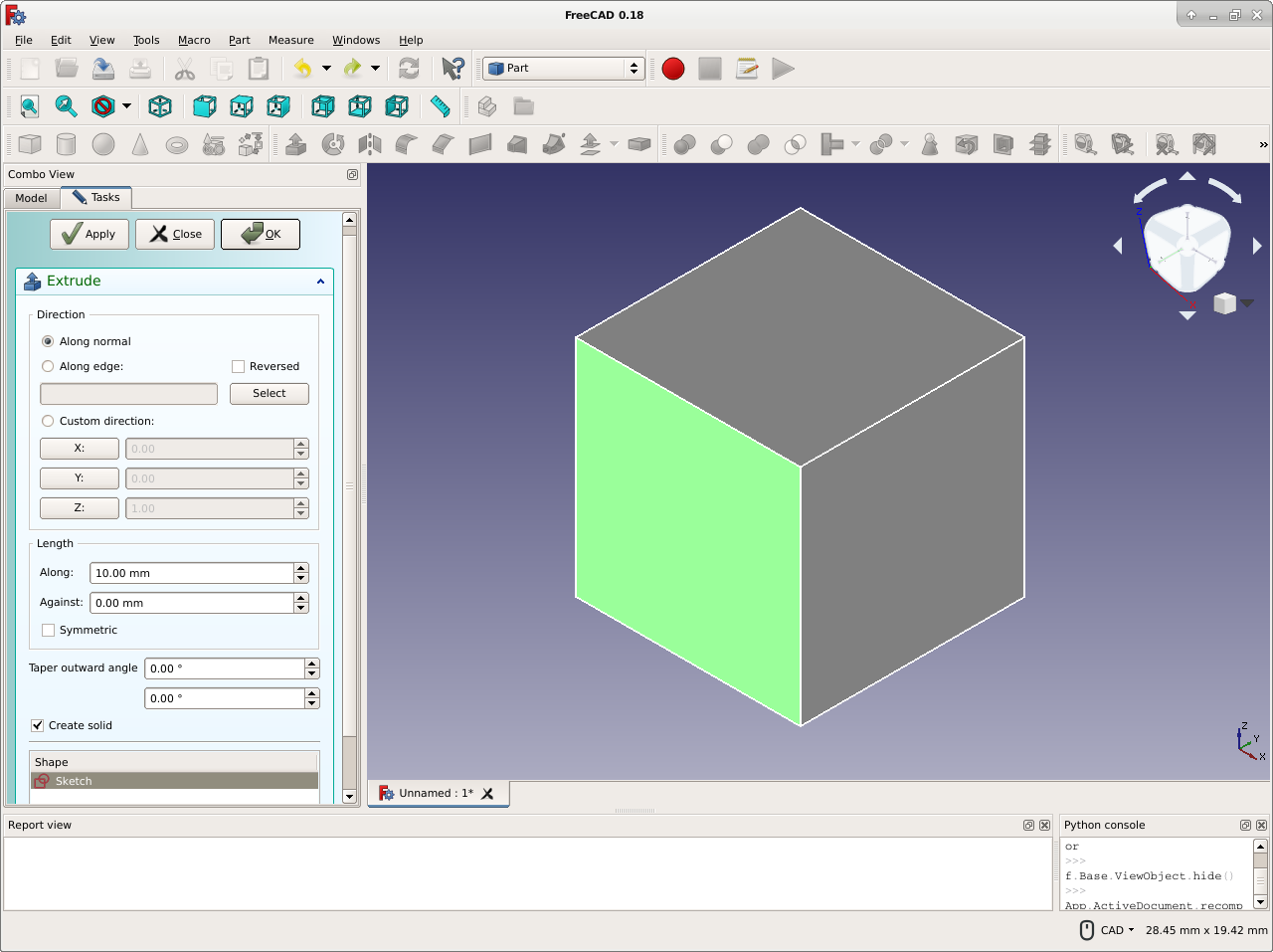
Customizing the interface
The interface of FreeCAD is highly customizable. All panels and toolbars can be moved to different places or stacked one above another. They can also be closed and reopened when needed from the View menu or by right-clicking on an empty area of the interface. There are, however, many more options available, such as creating custom toolbars with tools from any of the Workbenches, or assigning and changing keyboard shortcuts.
These advanced customization options are available from the Tools → Customize menu:
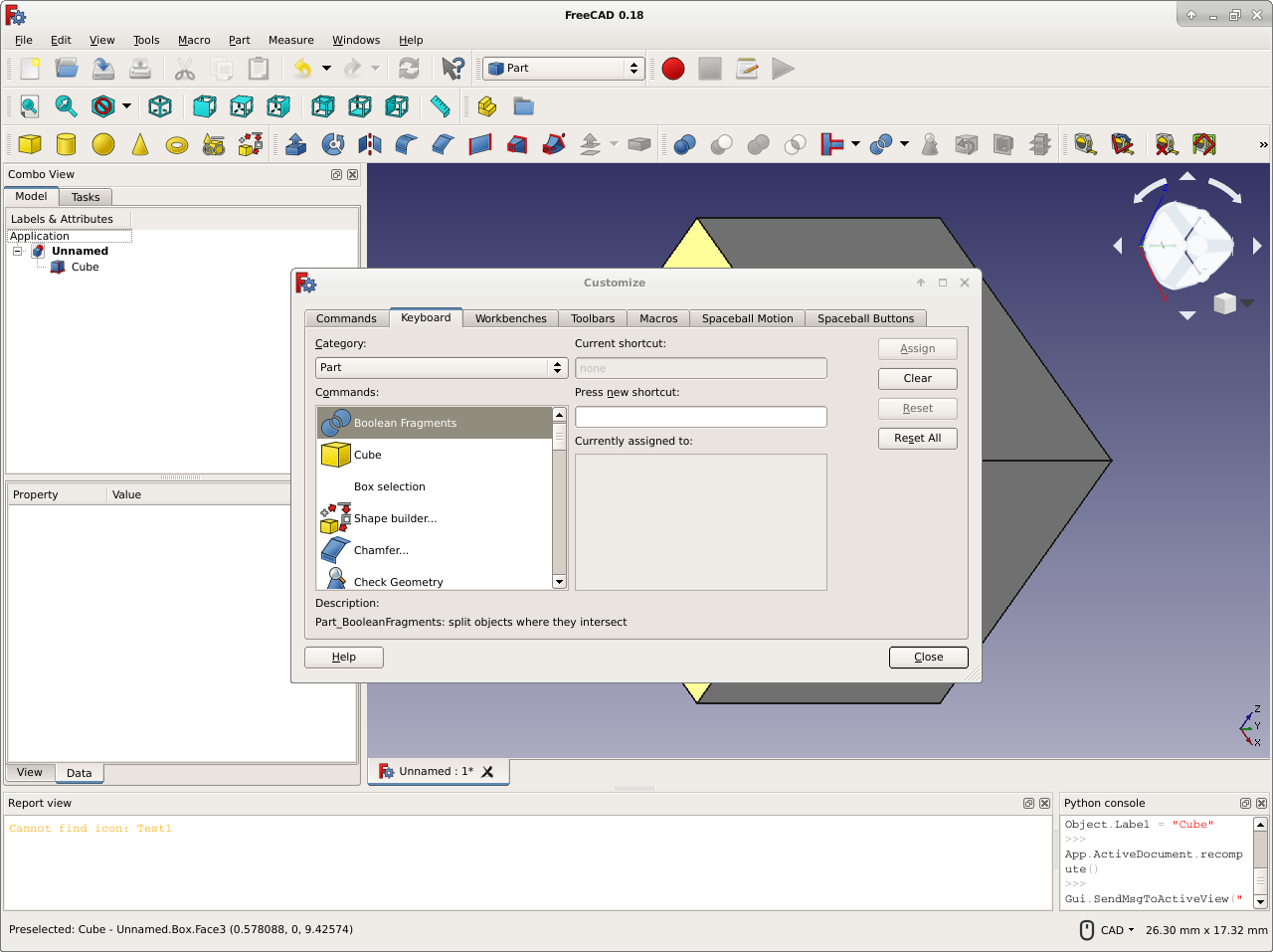
Read more

